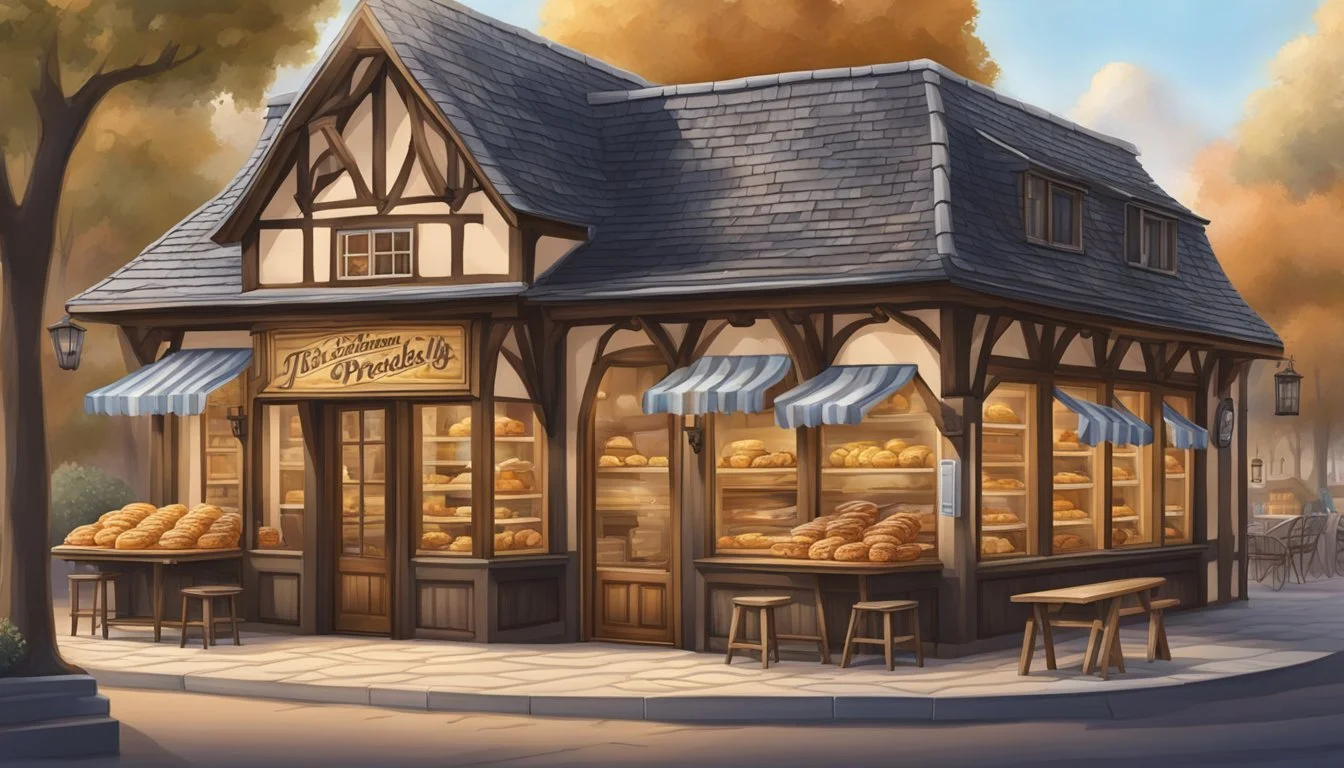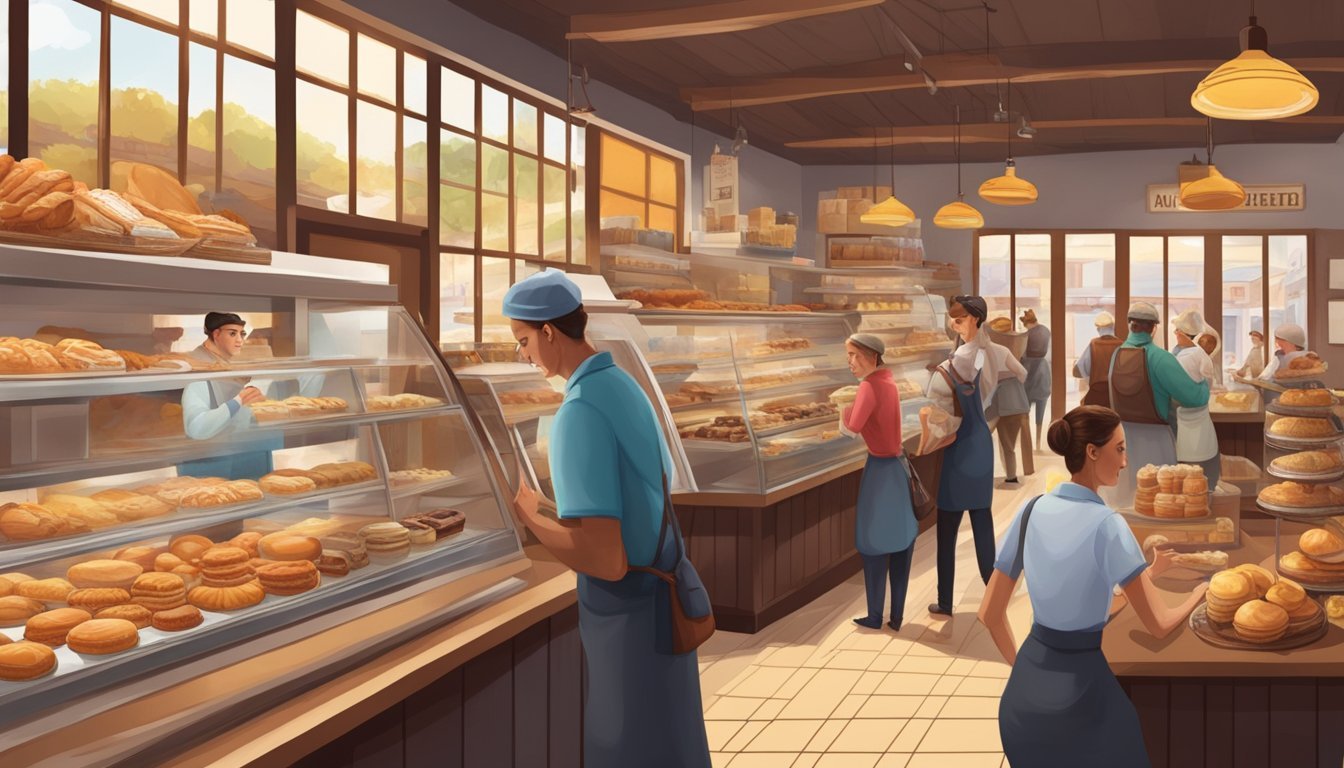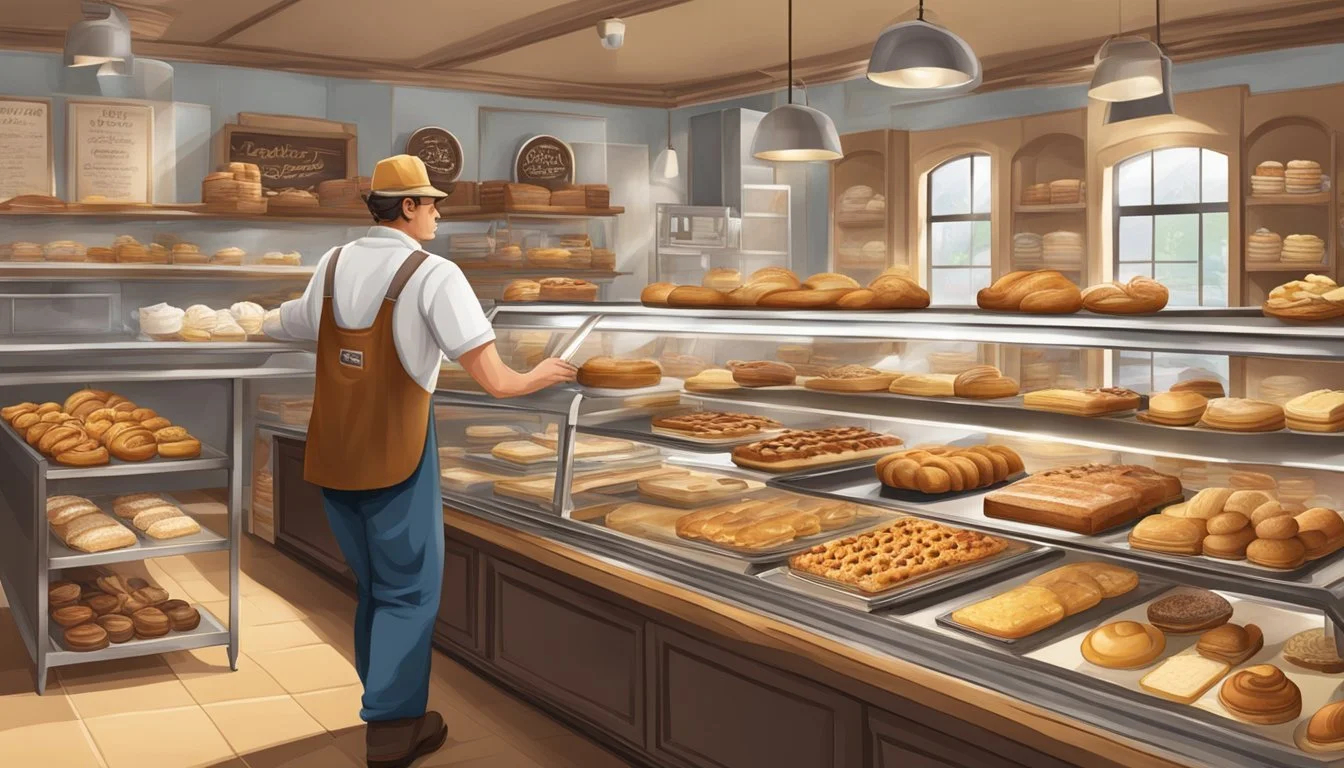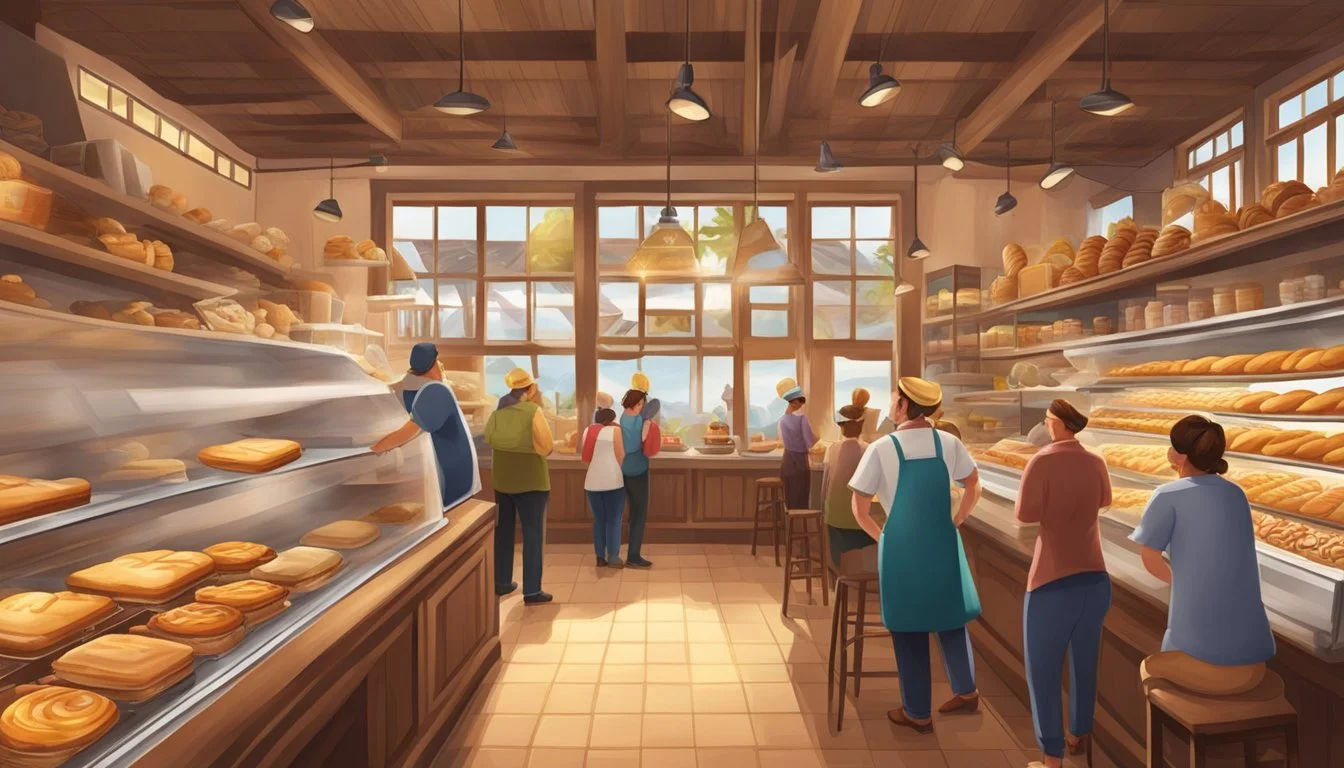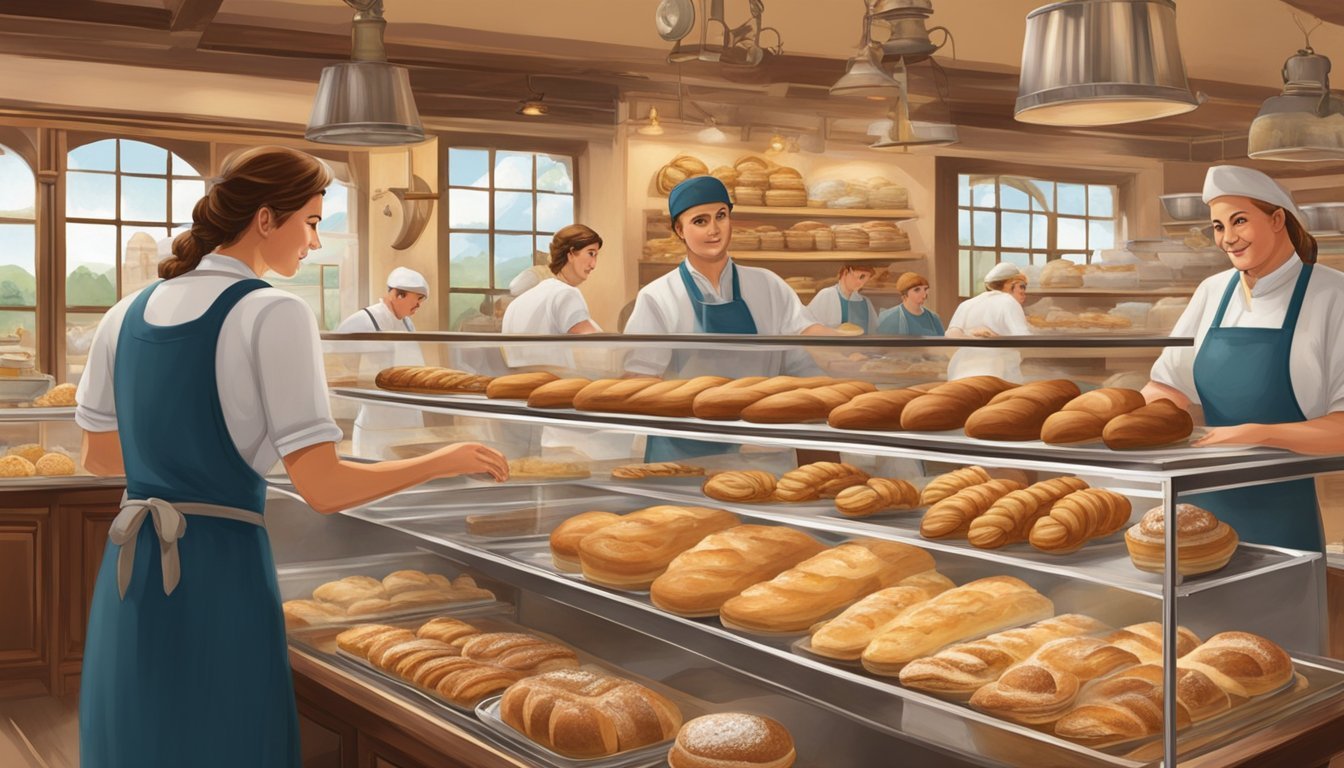The History of German Texan Bakeries and Pastry Shops
A Culinary Heritage Unveiled
The history of German Texan bakeries and pastry shops is deeply interwoven with the state's rich cultural tapestry. German immigrants, seeking new opportunities, began to settle in Texas during the 19th century, bringing with them a culinary tradition that would leave a lasting impression. Towns like New Braunfels and Fredericksburg became centers of German heritage, places where this influence is still palpable in their bakeries and pastry shops. These establishments, some of which have been in operation since the 1800s, are more than just food purveyors; they serve as historical landmarks that attest to the longevity and adaptation of German techniques in Texan cuisine.
One of the notable legacies of these settlers is Texas's oldest bakery, Naegelin's, which opened in New Braunfels in 1868. Such bakeries have become cornerstones of their communities, preserving the artistry of German pastry making while simultaneously folding in local flavors. The strudels, breads, and cakes found in these locales offer a distinctive taste of the fusion between German and Texan culinary traditions. Fresh, handmade pastries grace display cases, embodying the meticulous approach to baking brought over by German immigrants.
The history of these bakeries is not just a reflection of the past but continues to be a living narrative. From generation to generation, the skills and recipes passed down through these German Texan establishments contribute to the broader story of Texas's diverse food culture. Through the enduring presence of these bakeries and pastry shops, the spirit of German Texan heritage proudly maintains its place within the state's vibrant culinary scene.
Early German Texan Bakery Origins
The roots of German Texan bakeries are deeply intertwined with the state's immigration history, particularly influenced by the 19th-century European settlers who brought their culinary traditions to Texas.
19th Century Beginnings
In the 19th century, German immigrants began settling in Texas, attracted by the promise of land and opportunity. They infused their culture and history into local communities, establishing some of the first bakeries. Eilenberger's Bakery is a notable example, founded in 1898, which has grown into an institution recognized as one of the state's oldest operating bakeries.
Influence of Czech Immigrants
While not German, the Czech immigrants from the Czech Republic also left a significant mark on Texas's pastry shops. Arriving around the same period, the Czech's culinary offerings complemented the German's, with kolaches—a Czech pastry—becoming part of the Texan culinary fabric. This intersection of German and Czech baking traditions has contributed to a diversified bakery scene in the state.
Cultural and Culinary Fusion
In the landscape of Texan bakeries and pastry shops, the cultural intertwining of German and Czech traditions has given rise to a unique culinary fusion. This blend is evident in the evolution of recipes that often merge Texan flavors with traditional European techniques.
Integration with Czech Cuisine
German settlers initially established a strong baking tradition in Texas, which was later enriched when Czech immigrants contributed their own flavors and recipes. Central to this cultural merge is the kolache, a pastry that underscores the Czech influence in Texan culinary practices. Originally, kolaches were sweet, fruit-filled pastries, but in Texas, they have adapted to include various fillings:
Traditional fruit fillings like apricot, cherry, and poppy seed
Savory varieties featuring sausage, cheese, and even jalapeños
This fusion not only showcases Czech culture but also demonstrates the versatility of Texan bakeries in embracing and enhancing these delicacies with local tastes.
Texan Cuisine Influence
Texan cuisine's hallmark is its ability to assimilate diverse culinary elements while imparting its distinct flavors. Bakeries have been instrumental in this process, particularly in how they've adopted the strudel. Originally a German pastry, strudels in Texas often incorporate ingredients emblematic of the region, resulting in a unique Texan twist. For instance:
Strudels with spiced peaches or pecans reflect local produce
The use of brisket or barbecue meats illustrates a Texan take on savory pastries
By integrating these Texan flavors, bakeries provide a culinary window into the state's hybrid culture, where German foundations have gracefully blended with the broad palette of Texan cuisine.
Iconic Pastries and Recipes
German Texan bakeries have long been celebrated for their delightful range of pastries that incorporate both traditional European styles and local Texan influences. The most iconic pastries reflect a rich heritage and a fusion of sweet and savory flavors.
Sweet and Savory Kolaches
Originating from Czech tradition, kolaches found their way into Texan bakeries through Central European immigrants. Typically, a kolache is a pastry made of yeast dough filled with various ingredients. The dough, enriched with milk, butter, egg, and sometimes a touch of sweetness, serves as a soft, pillowy canvas for the fillings. Texan adaptations often include local fruits, cream cheese, or poppy seed mixtures, contributing to the pastry's signature sweet profile.
Introduction of Klobasnek
Similar to kolaches yet distinct, the klobasnek specifically wraps the yeast dough around savory fillings, such as sausages or cheese. Despite common misconceptions, klobasnek are not traditional Czech pastries but rather an innovation by Texan Czechs. The name itself does not originate from the Czech language, and these pastries essentially evolved to cater to the local taste for convenient and hearty treats.
Diverse Fillings and Flavors
The fillings in both kolaches and klobasnek highlight a blend of Texan and European tastes:
Sweet Fillings: These could include local berries, sweetened cream cheese, or fruit preserves.
Savory Fillings: Options range from smoked sausage, combinations of cheese and ham, to even jalapeño-infused concoctions for a Texan twist.
Each bakery has its own secret recipe and method that contribute to the dough's flavor and texture, which are as important as the fillings themselves. Milk and eggs ensure the richness of the dough, while a proper balance in the yeast dough allows a light, airy finish to complement the fillings.
Baking Techniques and Ingredients
In the realm of German Texan bakeries, mastery of dough making and adherence to traditional baking processes stand as pillars of their craft. Each bakery prides itself on a blend of inherited European recipes and Texan influences, creating distinctive pastries that incorporate time-honored methods with local ingredients.
The Art of Dough Making
A precise mixture of flour, water, and yeast forms the foundation for a variety of baked goods in German Texan bakeries. Flour—often unbleached and milled to a specific coarseness—is carefully selected for each type of bread and pastry. The incorporation of butter and sugar adds richness and sweetness respectively, with some recipes requiring a delicate balance to achieve the desired flavor and texture. Salt is a crucial ingredient as well, enhancing taste and regulating yeast activity.
The process of dough making is both a science and an art. Ingredients are measured with precision and mixed to form a dough that is then subjected to kneading. Kneading strengthens the gluten network within the dough, leading to the desired consistency and elasticity.
Traditional Baking Processes
Once the dough is made, shaping takes center stage in transforming it into the various forms characteristic of German Texan pastries. Bakeries utilize a slew of techniques, from rolling and coiling for pastries like strudels to precise cuts for rolls and bread loaves.
Ovens play a vital role in the baking process, with temperature and humidity being controlled to ensure a crisp crust and a soft, airy interior. The type of heat (convection or deck ovens, for example) also greatly affects the outcome, with some pastries requiring specific conditions to achieve their signature textures.
Yeast, a fundamental aspect of many German Texan baked goods, undergoes a fermentation process that not only causes the dough to rise but also contributes to the flavor profile of the end product. Monitoring the rising stages—proofing—is essential for optimal texture and height.
By meticulously combining baking techniques and ingredients, German Texan bakeries preserve the authenticity of their European roots while adding a unique touch to their beloved baked creations.
Modern Developments and Trends
The German Texan bakeries have evolved, integrating unique flavors and adapting to the prevailing food trends. These transformations reflect a fusion of traditional German baking with Texan tastes, expanding the reach of these pastries beyond the Lone Star State.
Fusion with Tex-Mex Flavors
German Texan bakeries have begun incorporating Tex-Mex ingredients, giving birth to inventive pastries that offer a taste of both cultures. The kolache, a traditional Czech pastry, has adapted to include Tex-Mex staples such as tacos and carne guisada. For example, a bakery in Austin now serves a kolache filled with Texas barbecue, demonstrating the seamless blend of German, Czech, and Texan flavors.
Contemporary German Texan Bakeries
Today's bakeries are not just places to purchase pastries; they have become destinations. The Czech Stop in West, Texas, is renowned for its traditional offerings, while Village Bakery, the oldest Czech bakery in Texas, maintains its legacy by preserving authentic recipes. New establishments like Kolache Factory have expanded even beyond Texas, introducing German Texan pastries to places like New York and Brooklyn.
Popularity Beyond Texas
The popularity of German Texan pastries has seen these treats making their way to other parts of the country. San Antonio has seen an emergence of bakeries like Bexar Kolaches, indicating a sustained interest in these unique cross-cultural items. Beyond the traditional Czech Belt, German Texan bakeries find favor in diverse settings, with patrons craving everything from sweet to savory fillings, including boudin, a reflection of the broader Texas palate.
Community and Festivals
German Texan bakeries and pastry shops are hubs of cultural heritage, particularly reflecting the traditions brought by Czech immigrants to Central Texas. These festive locales not only serve delicious baked goods but also play a significant role in preserving and celebrating Czech culture through events and community gatherings.
Kolache Festival and Celebrations
Annually, West, Texas, becomes the heart of the Czech-American community as it hosts the Kolache Festival, a celebration of the beloved pastry and Czech heritage. The festival features a variety of kolaches, from classic flavors to innovative twists, showcasing the culinary prowess of local bakers. Central Texas is vibrant with these festivities, which include parades, traditional music, and dance, affirming the area's strong Czech roots.
Location: West, Texas
Highlights: Parades, music, dance
Focus: Celebration of Czech culture and pastry
Bakeries in the Czech Belt Community
The Czech Belt, an area with a high concentration of Czech-Americans in Central Texas, is dotted with historic bakeries. These establishments are more than just places to buy bread; they are pillars of the rural communities, providing a space for cultural exchange and continuity. Bakeries in towns like Schulenburg and La Grange are famous for their traditional kolaches and have become must-visit destinations for those traveling between major cities like Austin and San Antonio.
Schulenburg: Known for traditional Czech pastries
La Grange: A cornerstone in the Czech Belt
Cultural Impact: Serve as cultural preservation sites
The bakeries in this region not only cater to locals but also attract visitors from across Texas, reinforcing the connection between food, culture, and community in these festive gatherings.
Challenges and Preservation
German Texan bakeries and pastry shops reflect a rich cultural heritage. They struggle with modernization while striving to preserve traditional recipes and methods passed down through generations.
Preserving German Texan Heritage
Maintaining the integrity of German Texan bakery heritage presents various challenges. The delicacies that these bakeries offer—such as strudels, pretzels, and pastries—require time-honored techniques that clash with fast-paced modern production methods. There is a critical need to balance efficiency with authenticity to keep traditions alive. Cultural preservation efforts are further complicated by the dwindling number of generational bakers willing to continue the family business. German immigrant influence, which is at the heart of these establishments, risks being diluted if traditional practices and recipes are not meticulously preserved and recorded. Community engagement and historical societies play pivotal roles in ensuring that the culture and history of German Texan bakeries remains vibrant.
Future of the Baking Tradition
Looking towards the future, the survival of German Texan bakeries hinges on the successful passing of the torch to a younger generation who can adapt age-old recipes to contemporary tastes without compromising their Czech and German roots. Education and mentorship are vital, as is a willingness among new bakers to embrace the history and culture embedded in their craft. As populations become more cosmopolitan, embracing the textures and flavors of German Texan baked goods offers an opportunity for these bakeries to tap into a broad audience, ensuring their delicacies continue to be enjoyed and their stories told.
Conclusion
German Texan bakeries and pastry shops hold a significant place in the cultural heritage of Texas. They are more than just food establishments; they represent a fusion of German tradition with Texan spirit. Since the 19th century, these bakeries have served as a testament to the perseverance and influence of German immigrants.
Naegelin's Bakery, established in 1868, is an emblem of longevity and tradition. As the oldest bakery in Texas, it showcases authentic German pastries in the heart of New Braunfels.
Eilenberger's Bakery, founded in 1898, carries the legacy of German craftsmanship in Palestine, Texas. It has adapted over time while maintaining its historic roots.
These establishments have contributed to the state’s diversity and culinary reputation. Texas's German pastries have earned a beloved status among locals and visitors alike. They are integral to the state’s identity, offering a unique taste of history with every bite.
The journey of these bakeries from their inception to the present day is a narrative of adaptation and cultural retention. As such, the German Texan bakery scene embodies a rich tapestry of history and cultural exchange. Whether through time-honored recipes or the adaptation of old classics, these pastry shops continue to shape the gastronomic landscape of Texas.

